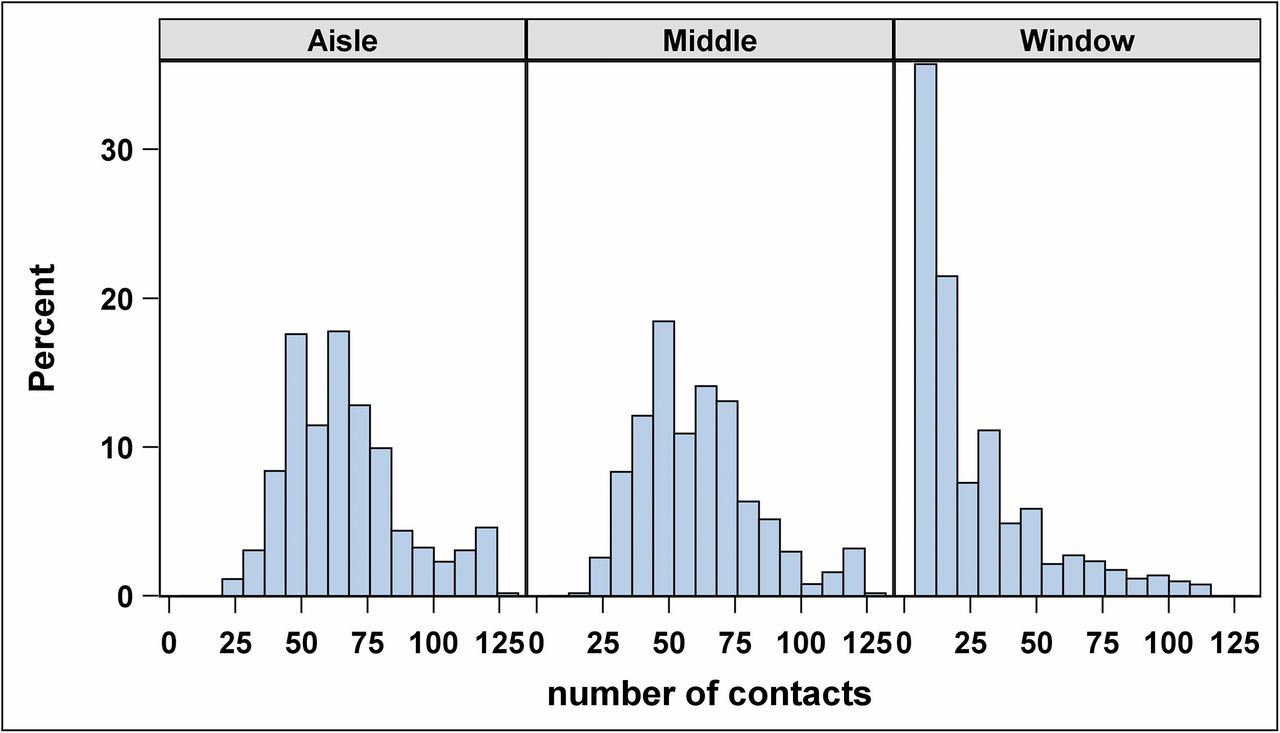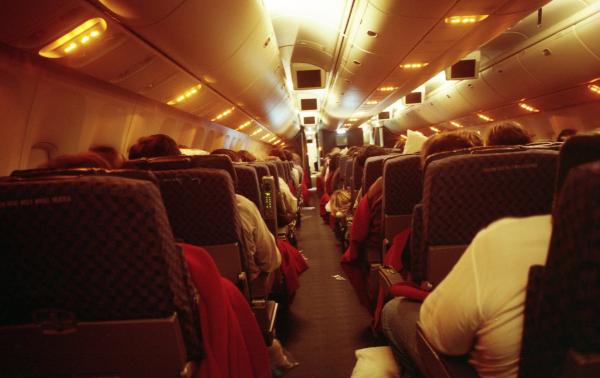It's easy to get sick during a flight, right?
With the recycled air and all of those people cramped together - isn't a plane basically a flying petri dish?
One research team from Emory University decided to look at just how likely it is to pick up an infectious disease during a flight, and what the factors are that could make the difference between walking off of the flight infected or not. Their findings are surprising, with a big factor being your assigned seat.
The main transmission route for airborne diseases such as influenza and SARS are respiratory droplets. These can travel through the air when someone coughs, sneezes, etc. The researchers estimate that two passengers would have to be within one meter of each other for transmission to occur.
The researchers figured that a passenger can have close contact with others in the plane in three ways: they could be in nearby seats, she or he could move past a seated or another moving passenger, or a passenger could have someone else pass by them while remaining seated.
In order to track movements of people in the air, the researchers (a team of 10 people) flew on 10 transcontinental, single-aisle flights, departing in the morning or afternoon. During the flight, they recorded the behaviors and movements of passengers (and crew) seated in the economy class cabin.
How much do people move around on a flight?
The team observed that 38% of passengers never left their seats while in flight, 38% left once, 13% left twice, and 11% left more than two times. But, not everybody moved to the same extent.
Eighty percent of passengers seated in the aisle moved at least once during the flight, 62% of passengers seated in a middle seat, and 43% of people seated by the window. The most common reasons for moving were to use the bathroom or check the overhead bin.
The figure below shows the number of contacts by seating position. It is easy to notice that the aisle and middle seats have the most contacts while passengers in the window seats have far fewer.

When the team added onto their data a simulated transmission of an infectious disease during flight based on these data, they determined that direct transmission of a virus to a passenger not seated in close proximity to an infectious passenger is an unlikely event.
There are over 3 billion airline passengers annually, making transmission of infectious diseases an important global health concern. This data-driven, network transmission model of droplet-mediated respiratory disease is unique. On top of their work modeling movements, the team also collected 229 environmental samples (air and surfaces) during the flights. They assayed the samples for 18 common respiratory viruses and all were negative.
So, if you're heading off for spring break in the next week and want to avoid getting sick en route, try to grab a window seat and stay put.**
Source: Hertzberg VS, Behaviors, movements, and transmission of droplet-mediated respiratory diseases during transcontinental airline flights PNAS March 19, 2018. 201711611; published ahead of print March 19, 2018. https://doi.org/10.1073/pnas.1711611115
**Moving around is important for blood circulation. So, even though not moving might be the best way to avoid catching a cold, you don't want it to come at the cost of a blood clot. As always talk to your physician before traveling if you have questions/concerns.




